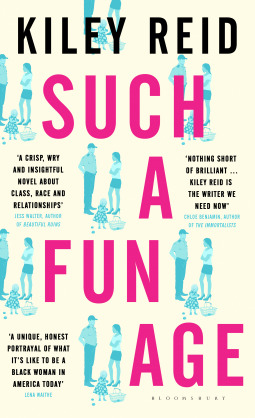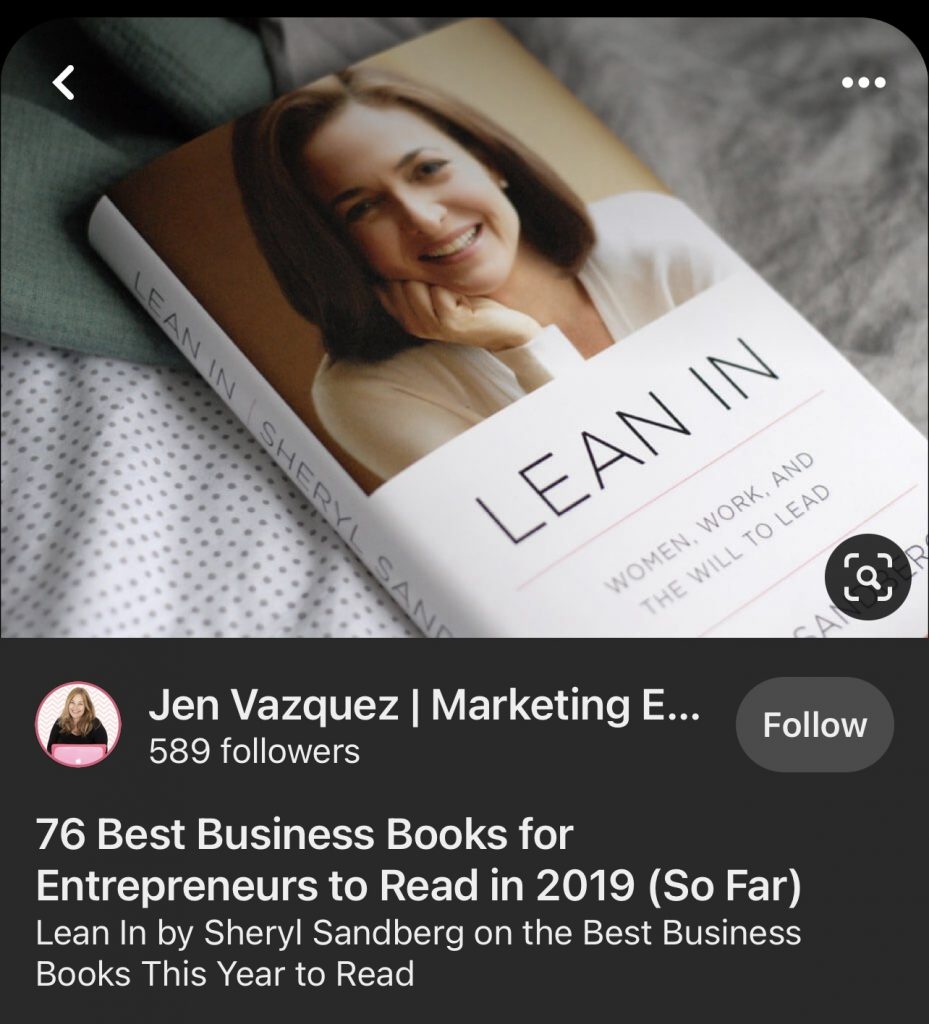
In a digital era where feminism has gained spectacular visibility (think hashtag activism, feminist slogans on t-shirts), you might be tempted to believe that feminism has evolved into an all-inclusive movement. Well, Kiley Reid begs to differ. Her 2019 novel, Such a Fun Age, pokes fun at the performative nature of white female ‘wokeness’ while also exposing its insidious underbelly–it highlights how popular feminism prioritises the white, middle-class experience. This preoccupation, Reid slyly suggests, threatens to silence and make invisible the voices and experiences of women of colour.

“The dominant culture of popular feminism [is a] primarily white, middle class feminism that seizes the spotlight in an economy of visibility and renders other feminisms less visible”
Banet-Weiser 23
Our first clue to the devaluing of black voices in the novel comes in the very first chapter. We are thrust into a racially charged confrontation in an upscale Phillidelphia grocery store where Emira’s body is rendered hypervisible under the white gaze of the security guard:
“She saw herself in her entirety: Her face-full brown lips, a tiny nose, a high forehead covered with black bangs […] All she could see was something very dark and skinny”
10
Reid immediately draws attention to Emira’s race as something that renders her hypervisible: “brown”, “black”, “dark”. At the same time, however, Emira is paradoxically rendered invisible. Her voice is marginalised while the voices of white people around her–the woman in the store, Peter, and even three-year-old Briar–are amplified.
“”I’ll call her father and he can come down here. He’s an old white guy so I’m sure everyone will feel better'”
“The security guard pointed a finger at her face. ‘I am speaking to the child‘”
14
White voices also monopolise the novel on a structural level. While initally centered on Emira’s perspective, the narrative shifts, as the voices of Alix and Kelley begin to filter in, overwhelming Emira’s personal narrative. This multi-perspectival style transforms Emira into a minority voice within the very narrative structure of the book itself. Reid devotes chapters Alix’s teenage years and her encounters with a young Kelley, in contrast to the scant pages on Emira’s history. This is undoubtedly a deliberate choice by Reid that culminates in an awkward thanksgiving dinner where personal histories are spilled over turkey.
What ensues is what Alix mentally terms a game called “Which One of Us Is Actually More Racist” (228) or as one reviewer from The New York Times puts it: “white liberal anxieties play out in a tug-of-war for Emira’s affections”:
“’Emira deserves to know who she’s dating.” No, you know what, Alex?’ Kelley leaned forward with one arm on the table. ‘Emira deserves a job where she gets to wear her own fucking clothes.'”
227
Here, the presumptious attitude of Alix and Kelley as they dictate what they believe is best for Emira reveals the superficial nature of white allyship. By excluding Emira from a conversation that directly concerns her, the white characters inadvertanely reinforce Banet-Weiser’s proposition that popular feminism “refuses intersectionality, and often erases and devalues women of color” (13-14).
Alix’s letter writing business, LetHerSpeak, best exemplifies this mode of feminism. Her business, kickstarted by writing “over one hundred letters and receiv[ing] over nine hundred dollars’ worth of merchandise” (20) represents a “corporate-friendly feminism” that embraces consumerism without challenging capitalist structures (Banet-Weiser 12).
“neoliberal feminism is one in which the values [of] neoliberalism—ever-expanding markets, entrepreneurialism, a focus on the individual—are embraced, not challenged, by feminism”
Banet-Weiser 11-12
Such a Fun Age locates this wave of entreprenurial feminism firmly within the digital realm. Reid satirises the rise of the white female entrepreneur to Instagram fame through Alix who “earn[s] another thousand followers” after “Small Business Femme” posts an Instagram photo of Alix breastfeeding onstage, captioned “Find You a Woman Who Can Do Both” (29).
On the other hand, Emira remains invisible within this digital world: “oh no, I don’t have Instagram” (Reid 135). Emira’s lack of an online presence therefore positions her distinctly outside the sphere of popular feminism, a movement that relies on online platforms to desseminate messages of female empowerment.





It is ironic then that Alix’s feminist slogan, #LetHerSpeak, actually serves to disempower Emira in the novel–we learn that Alix’s slogan, like her name, is phony. Alix’s suggestion that Emira wear one of her “white LetHer Speak polos” while babysitting not only carries racial undertones of white ownership and black subservience but it also reduces Emira to a tokenistic accessory; a living embodiment of Alix’s supposedly inclusive brand (Reid 49).
Tokenism intensifies as the novel progresses, culminating in a television interview where Alix exploits Emira as a passive prop to endorse her company. During the interview, Emira is thrust into the ‘spotlight of visibility’ and her trauma is transformed into a marketable commodity:
“Emira embodies much of the spirit in my business LetHer Speak,” she said. “Not only did she stick up for herself, but she listens to herself, and this is exactly the kind of person Peter and I want around our girls”
285
Yet, in the cathartic final pages of the novel Emira reclaims her verbal power. Leveraging her newfound visibility, Emira hits Alix where it hurts–her public image–and denies Alix and the wider media the opportunity to monetise her trauma:
“I will not actually be joining the Chamberlains full-time? Or like… at all […] it would be best if we go our seperate ways and our paths… never like came back together.”
285-286
Through its exploration of everyday racial microaggressions, Such a Fun Age urges its readers, especially its white readership, to consider the ways in which we wield our voices, or in this new digital age, our keyboards, to inadvertently marginalise the experiences of women of colour. Ultimately, Reid advocates for more equitable spaces, both online and offline, in order to amplify, rather than silence, diverse voices.
Bibliography
Banet-Weiser, Sarah. Empowered: Popular Feminism and Popular Misogyny. London: Duke University Press, 2018.
Canfield, David. ‘Kiley Reid has written the most provocative page-turner of the year’. Entertainment Weekly, 2019.
Christensen, Lauren. ‘When It Comes to Race, How Progressive Are the Progressives?’. The New York Times, 2019.
Reid, Kiley. Such a Fun Age. Dublin: Bloomsbury Publishing, 2019.

Really interesting how you combined economies of visibility with the idea of voice, as one does not necessarily mean the other. The idea that Emira is transformed into a minority voice due to the dominating voices of two other white characters seems to be at the core of the novel. Emira is thrust into the spotlight, first when Kelley takes a video of her and repeatedly pressures her to post it, and later when Alix decides that Emira should release a statement, but on the terms Alix believes to be best. The irony of #LetHerSpeak becomes apparent when female voices are censored and adapted to fit a superficial marketing agenda that only embraces a fickle form of white allyship. Your blog post also made me think about Emira’s characterization, in the sense that some people (GoodReads reviews can be brutal) thought her character to be flat and underdeveloped. She lacked assertiveness in some cases and often waited for other people to take control. Perhaps this is another point that Reid tried to make, that there is often the expectation that minorities will speak up, explain and defend themselves when they are just trying to live an unprovocative life. Not everyone wants to choose the spotlight of visibility, even when someone discriminates or tries to take advantage of them. That might mean that Emira is not the heroine some people expected her to be, but I definitely think that it makes her a very human character. I also liked how you ended your blog post with the note that the novel urges white readers to reconsider their voice and the way that we enable or disable spaces of visibility, instead of focusing on the supposed shortcomings of Emira’s character as the example of a minority voice.
Hi Senne, thanks for your interesting comment! I like how you brought up the societal expectation placed on people of colour to speak up, explain and defend themselves and their community – to be the spokesperson for their race. This is definitely relevant to Reid’s novel. Emira choice not to share the grocery store video, for example, shocks Alix who believes it is Emira’s duty, as a black woman, to confront racial injustice – so much so that she goes ahead, invades Emira’s privacy and posts it herself!
Really excellent post on the silencing of black voices in Reid’s Such a Fun Age – and the extent to which feminism has tended to privilege white middle class voices and experiences; a move which renders black female subjects invisible and hyper-visible in all the ways you describe so well (perhaps scope to make connections to Citizen here?). You also make some excellent observations about how this move to silence or write over black voices is written into the novel’s structure and how this works to ensnare and perhaps overwhelm Emira at particular points in the novel. Does this make Emira passive as subject and is there anything ‘interesting’ about her passivity. I’m not sure passivity is the right word, though. Emira’s resistance might also take the form of silence or awkwardness or refusal, even if the white characters do not recognise these actions as resistance per se. Yao’s examination of ‘disaffection’ in the face of white sympathy – and what she calls a white liberal politics of recognition – may be one way of thinking about Emira’s unwillingness to play the roles that have been staked out for her.
Hi Andrew, thanks for the useful feedback! There definitely is something interesting about Emira’s seeming ‘passivity’. It does indeed seem to resonate with Yao’s invocation for people of colour to “take no more business with white white sentimentality”, to “refuse to feel” (2). In light of this, I might offer a revision to my blog post. Emira is perhaps not as passive as she is defiant, or deliberately disaffected. She refuses to perform the emotional labour historically expected of domestic workers of colour who, as Yao points out are only “ever to be [the] soothing and understanding […] Mammy or Uncle Remus” (2). A good example of this is around page 219 when Alix expresses her discontent at Emira dating Kelley and Emira subverts the expected response of sympathy and aquiesence instead remaining awkward and uncooperative. As you helpfully point out, Emira therefore exhibits an unwillingness to play into this stifiling imperative to white sympathy. When considered this way, Emira’s silence and awkwardness, which at first glance might be percieved as passivity, is transformed into resistance.
This is a really interesting post highlighting how Reid tells a story of microaggressions through a white-dominated perspective, focusing as you say on prioritising the white middle class. The idea of “which one of us is more racist” which oscillates between the white characters reveals the self indulgence and competitiveness between them which overshadows the importance of Emira’s own experience. This in itself as a focus in the novel acts as a display of how black voices are silenced. Reid purposefully takes away Emira’s voice and experience and is filtered through white voices to show how often white people’s discussion of race dominates the space thus disregarding black voices. I do wonder if without critical thought, the novel fails to show this and instead focuses too much on the white experience. While we can discuss it as a novel that satirises white people’s activism, does it in doing so further take away from black voices? The alternative then would be Reid writing a novel about Emira’s experience without the heavy focus on the people around her. If this was the case I wonder if the message would be lost, or would importantly give a voice to someone experiencing microaggressions.
Amy, I find your take on Reid’s work incredibly insightful, with note to your exploration of social media.
In particular, I love your point that states, “Such A Fun Age locates this wave of entrepreneurial feminism firmly within the digital realm. Reid satirises the rise of the white female entrepreneur to Instagram fame through Alix”. Here, popular feminism is critiqued, and its entanglement with capitalism is centred. Ostensibly, Alix’s version of feminism is outdated, and beholden to 2nd wave feminism of the 1960s, opposed to a more intersectional version of feminism which precedes it. Reid continually draws upon the performative aspect of social media; in turn, raising the question: why does Reid make Alix an influencer? Is it to further insinuate her insufferable nature, or rather is it to focus on the performative nature of Alix’s existence?
Hi Amy! I really enjoyed your dissection of Reid’s use of visibility especially on social media. With this new wave of influencers and mommy bloggers that are white upper-class women catering their feminism to other white upper-class women. Alix is the embodiment of performative white liberal feminism, feeling uncomfortable with her proximity to wealth and whiteness yet she takes full advantage of them. Her business champions women raising their voices whilst resenting the sound of her own daughter, Briar’s voice—she even describes it as “loud and hoarse” and compares it to a “fire alarm.”